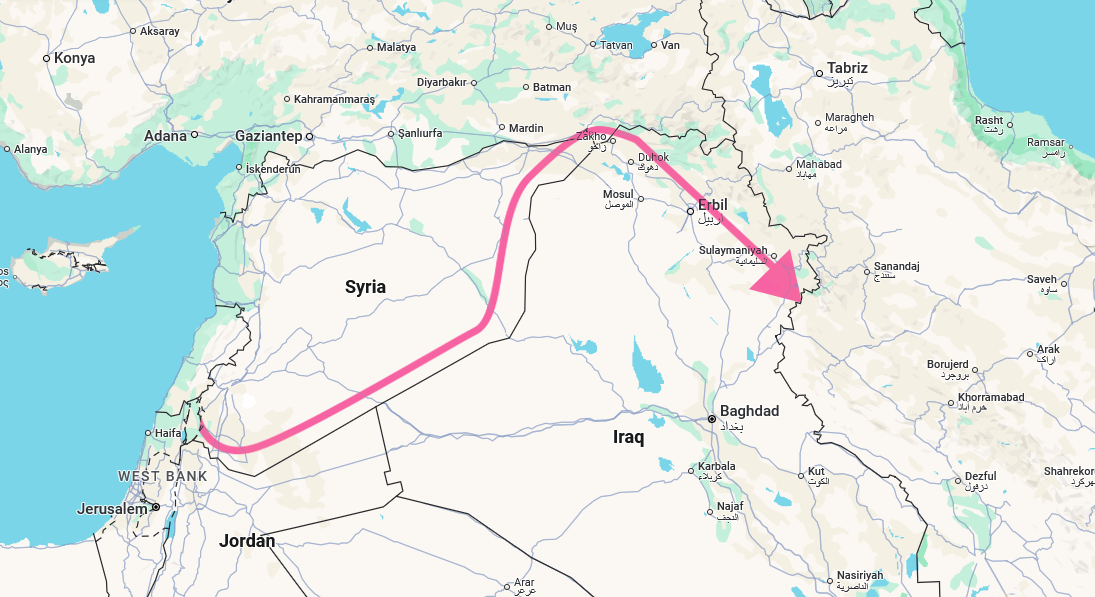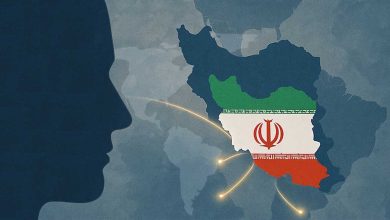
Recent geopolitical developments in the Middle East—particularly in southern Syria and the areas adjacent to the occupied Golan Heights—point to a fundamental transformation in Israel’s surrounding security and development architecture. Tangible indicators of this shift include a significant increase in intelligence activities, targeted military operations against Syrian state infrastructure, and focused interventions in specific ethnic regions such as the Suwayda Governorate. These actions suggest that Israel has entered the operational phase of a geostrategic plan referred to as the “David’s Corridor.” This initiative, conceived as a complex geopolitical project, pursues multilayered security, intelligence, and even cultural objectives.
In contrast to the “Axis of Resistance” developed over the past two decades by the Islamic Republic of Iran to establish a geo-political continuum resilient against Western and Israeli influence, the “David’s Corridor” is fundamentally designed as an antagonistic and inverse structure. It aims to connect Israel through a land route to structurally fragile regions in Syria and Iraq, ultimately reaching the western borders of Iran. Through this approach, Israel seeks to establish a new penetration belt capable of simultaneously achieving several strategic functions: undermining the geographical continuity of the Axis of Resistance, ensuring a sustainable presence of intelligence and military capabilities in key areas, and exploiting the region’s ethnic and sectarian heterogeneity as a geopolitical lever against rival actors.
The proposed route of this corridor begins in the Israeli-occupied Golan Heights, extending through the Druze-populated areas of Suwayda, as well as Daraa and Quneitra provinces, moving eastward through Syria. It then traverses the strategic region of Deir ez-Zor—considered a key east-west transit chokepoint—before entering northern Iraq. The corridor proceeds through Yazidi and Kurdish areas such as Sinjar, Nineveh, Erbil, and Dohuk, eventually reaching the western Iranian border at locations like Piranshahr, Sardasht, Baneh, or Qasr-e Shirin. The selection of this route is not merely based on geopolitical or geo-cultural considerations but is strategically designed to exploit unstable and heterogeneous population structures—communities that are often distrustful of central governments or suffer from fragile security and economic conditions.
From a strategic perspective, this corridor pursues three main objectives:
-
Containing Iran’s geopolitical expansion: Israel seeks to block the geographic continuity of the Axis of Resistance by establishing a penetration corridor through power vacuums or ethnically unstable areas, thereby diminishing Iran’s strategic depth.
-
Establishing platforms for intelligence and military operations near Iran: This corridor would function as an informal frontline for deploying proxy forces, logistical equipment, and intelligence operations. It may also enable limited tactical strikes and sub-threshold disruptions.
-
Building an influence network based on regional minorities: By engaging with minority groups such as Druze, Kurds, and Yazidis, Israel aims to cultivate a network of aligned actors. If coherent and organized, this network could become a deterrent front against the Axis of Resistance.
However, the implementation of this project faces several structural and deterrent challenges. Deep ethnic and sectarian divides along the corridor’s path—such as rivalries among Kurds, Arabs, and Turkmens, or historic tensions between Druze and Sunni communities—may hinder the formation of a cohesive route. Additionally, competition among regional powers, especially Iran and Turkey, as well as some Arab factions, could trigger multifaceted reactions against the initiative. The Islamic Republic of Iran, as the principal actor in the Axis of Resistance, will be a critical variable in determining whether this strategy succeeds or fails.
Recognizing the geopolitical nature of the plan, Iran is likely to develop a multidimensional counter-strategy that may include:
-
Increasing field presence and influence through proxy actors in sensitive parts of the corridor’s path.
-
Expanding diplomatic tools and utilizing cultural and media resources to counter Israeli narratives among regional minorities.
-
Redesigning the Axis of Resistance’s logistical networks to reduce vulnerability to geographic fragmentation.
Ultimately, the “David’s Corridor” should not be viewed solely as a military or security blueprint but rather as part of a long-term strategy by Israel to redefine the geopolitical architecture of West Asia. It seeks to create an anti-resistance axis that can challenge Iran’s regional influence and shift the geopolitical initiative into Israel’s hands. Even partial realization of this project could significantly alter the balance of power in the region and reshape the security, military, and sociopolitical equations of West Asia.
Accordingly, the development and implementation of a comprehensive deterrence doctrine by the Islamic Republic of Iran is an urgent necessity to preserve regional coherence and safeguard the achievements of the Axis of Resistance. Such a doctrine must simultaneously leverage both hard and soft power tools and adopt a hybrid approach that combines realist and constructivist strategies in resisting Israel’s new security architecture.






